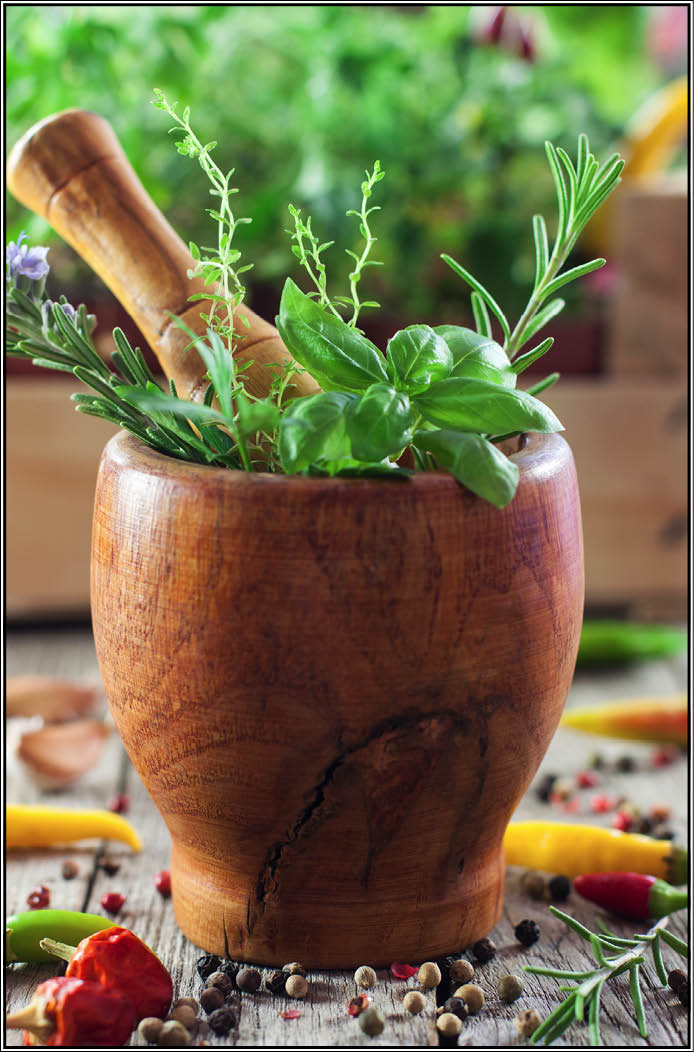Green Juicing Diet (3 page)
Read Green Juicing Diet Online
Authors: John Chatham

⢠Hydraulic Press Juicers
also known as Norwalk Juicers, extract juice in the most efficient way possible: they literally press it out. There's no chewing or grinding of the produce, and there's extremely little waste. Also, since it's a simple pressing process, there's no heat produced, or air forced into the juice. It's far and away the best way to extract juice.
Pros
: Practically no waste, no damage to the juice, and no air pressed in to cause oxidation.
Cons
: Extremely expensive at around $2,500 and take up a large amount of space â great if you have the room and the money, but unrealistic for most of us.
Choosing the right juicer or blender is an important part of your experience, so educate yourself about your options and choose wisely. Because there are so many different brands, and people juice for so many reasons, it's difficult to make specific product recommendations, so just pay attention to what the various machines offer and match those features to what you intend to use most.


WHAT ARE THOSE GREEN GOODIES?
G
etting the hang of juicing requires a certain amount of flavor savvy that you can develop only through personal experience, as everyone's tastes are somewhat different. What you may consider delicious may be repulsive to your neighbor, so trial and error here will truly be your best friend. But first, we'll give you a few pointers, so you're not going in totally blind. With this list and a little bit of common sense, your juicing journey won't be quite so dangerous to your palate!

The Green Juice Ratio for Success:
The easiest way to remember how to mix your green juice in order to keep a palatable flavor, at least in the beginning, is to follow the 4-3-2-1 method. Use 4 parts sweet juice, such as apple, grape, or pineapple; 3 parts grassy greens, such as wheatgrass, sprouts, spinach, or lettuce; 2 parts tangy juice, such as lemon, lime, or kiwi; and 1 part spicy or zesty juice or powder, such as mint, cayenne, or ginger. Of course, if you like savory juices, feel free to eliminate the sweet element!

The Great Green List
Since we've already discussed the fact that green juices don't have to be prepared entirely with green produce, this list isn't going to be green-only either. Instead, we'll cover many of the green fruits and veggies to include in your juice as well as herbs, spices, and deliciously nutritious produce of other colors, too.
By the end of this chapter, you'll understand how much juice to expect from each ingredient as well as its flavor profile, health benefits, and nutritional content. To make your experience even easier, we're going to break each item down into the flavor profiles described in the 4-3-2-1 method, starting with sweet and working our way down to spicy. When discussing yields, we'll speak in terms of weight instead of by the piece, in order to keep as accurate as possible.

Did You Know?
Though each fruit, vegetable, and herb is different, and some juicers are more efficient than others, a good rule of thumb is that one pound of produce yields about one cup of juice.

Naturally Sweet
These fruits and vegetables contain natural sweetness and will probably be the easiest for your body to get habituated to as you begin juicing. If you're having problems adapting to drinking your nutrients, try adding a few more of these to your blender or juicer until you adjust to the grassier or earthier flavors of some of your greener or less traditional ingredients.
Apples
⢠Color:
Green
⢠Yield:
1 pound = ¾ to 1 cup juice
⢠Flavor Profile:
Sweet with just a bit of tartness
⢠Health Benefits:
Apples are rich in phytonutrients, called polyphenols, as well as antioxidants. They help regulate blood sugar, decrease your risk of asthma, and reduce your odds of developing several types of cancer, including lung, colon, and breast cancers.
Apricots
⢠Color:
Peach
⢠Yield:
1 pound = ½ to ¾ cup juice
⢠Flavor Profile:
Moderately sweet, sometimes a little tart, musky, and mildly “peachy”
⢠Health Benefits:
Rich in beta-carotene and vitamins A and C, apricots help fight free radicals that cause eye conditions such as macular degeneration. They may also help you maintain healthy levels of HDL, the “good” cholesterol.
Beets
⢠Color:
Deep red
⢠Yield:
1 pound = ¾ to 1 cup juice
⢠Flavor Profile:
Sweet and earthy
⢠Health Benefits:
Beets are truly a superfood that almost deserve their own book to cover their many amazing health benefits! They're a great source of beta-carotene, phytonutrients, manganese, and vitamin C, and they help keep your heart, eyes, and nerves healthy.
Betalain, an incredibly powerful antioxidant and anti-inflammatory unique to beets, plays a major role in cellular detoxification. Plus the combination of antioxidants, nutrients, and anti-inflammatories help protect you from prostate, lung, stomach, colon, testicular, and nerve cancers.
Blackberries or Raspberries
⢠Color:
Black or red
⢠Yield:
1 pound = 1 cup juice
⢠Flavor Profile:
Rich, sweet, and sometimes a bit tart
⢠Health Benefits:
Two more examples of health superstars, blackberries and raspberries are rich in the phytonutrients called tannins, as well as copper, folate, magnesium, manganese, potassium, and vitamins C, E, and K. They're also a good source of omega-3 fatty acids, which help keep your brain and heart healthy.
The antioxidants in these berries protect you from a host of diseases, including cancer and heart disease. They also fight free radicals and help prevent signs of aging, including wrinkles, dull skin, and muscle loss. The antimicrobial properties help keep you free of digestive issues, too, as well as fungal infections, such as yeast infections.
Cantaloupes
⢠Color:
Yellow-orange
⢠Yield:
1 pound = 1 to 1½ cups juice
⢠Flavor Profile:
Sweet, musky, and refreshing
⢠Health Benefits:
Chock full of such nutrients and antioxidants as beta-carotene, folate, potassium, magnesium, and vitamins A, B1, B6, C, and K, cantaloupe not only adds a delicious sweetness to your juice, it also protects you from a host of agues and illnesses, including macular degeneration, emphysema, fatigue, irregular blood sugar, low metabolism, stroke, heart disease, immune weakness, and several types of cancer.
Carrots
⢠Color:
Bright orange
⢠Yield:
1 pound = 1 to 1¼ cups juice
⢠Flavor Profile:
Sweet and mild
⢠Health Benefits:
Like cantaloupe, the health benefits of carrots are off the charts and would take an entire chapter to cover in full. They're a great source of vitamin A, beta-carotene, the entire B complex of vitamins, calcium, manganese, molybdenum, phosphorus, and potassium. The nutrients, antioxidants, and anti-inflammatory properties help maintain eye health and promote good cardiovascular health. They also help protect you from cancer, as well as prevent signs of aging, and do wonders for your hair, nails, and skin.
Cranberries
⢠Color:
Red
⢠Yield:
1 pound = ½ to ¾ cup juice
⢠Flavor Profile:
Mildly sweet and tart
⢠Health Benefits:
Most people know that cranberries are great for your kidneys, but the red color also tells us that cranberries are full of antioxidants, and they have anti-inflammatory properties, too. Nutrients include manganese, the antioxidant and anti-aging kingpin resveratrol and vitamins C, E, and K.
They help prevent numerous health problems, including periodontal disease, kidney infections and stones, urinary tract infections, arterial plaque buildup and heart disease, and signs of aging such as wrinkles and thinning skin. Finally, cranberries may actually help reduce your downtime from colds and the flu.
Grapes
⢠Color:
Green
⢠Yield:
1 pound = ¾ to 1 cup juice
⢠Flavor Profile:
Sweet and tart
⢠Health Benefits:
Chock full of antioxidants (about thirty in total!), manganese, potassium, and vitamins C, B1, B6, and K, grapes help protect you from breast, colon, and prostate cancers, cardiovascular disease, irregular blood sugar levels, and cognitive decline.
Honeydews
⢠Color:
Green
⢠Yield:
1 pound = 1 to 1¼ cups juice
⢠Flavor Profile:
Sweet and light
⢠Health Benefits:
Honeydew is a good source of vitamin A, potassium, vitamin C, copper, and B vitamins, including niacin and thiamin. Honeydew is great for helping your body detoxify, and also protects you from cardiovascular disease, infection, skin damage caused by oxidation and collagen loss, several types of cancer, and eye disorders like macular degeneration.
Kiwifruits
⢠Color:
Green
⢠Yield:
1 pound = 1 to 1½ cups juice
⢠Flavor Profile:
Sweet and tart
⢠Health Benefits:
Kiwis actually have more vitamin C than oranges, as well as calcium and a host of vitamins and minerals. They have some amazing benefits, such as helping to lower your blood pressure, promoting circulatory health, protecting your DNA from oxidation, and reducing the risk of respiratory issues, especially in children.
Oranges
⢠Color:
Orange
⢠Yield:
1 pound = ¾ to 1 cup juice
⢠Flavor Profile:
Sweet, zesty, and sometimes a bit tart
⢠Health Benefits:
You probably already know that oranges are a great source of vitamin C, but did you know that they also have calcium, folate, potassium, vitamins A and B1, and several different phytonutrients, including anthocyanins, flavanones, polyphenols, and hydroxycinnamic acids? Oranges help lower blood pressure, fight off colds and the flu, and protect you from diseases such as lung and stomach cancers, arthritis, and atherosclerosis. In addition, they reduce your risk of stroke and heart disease.
